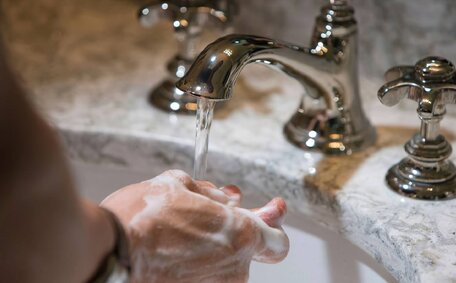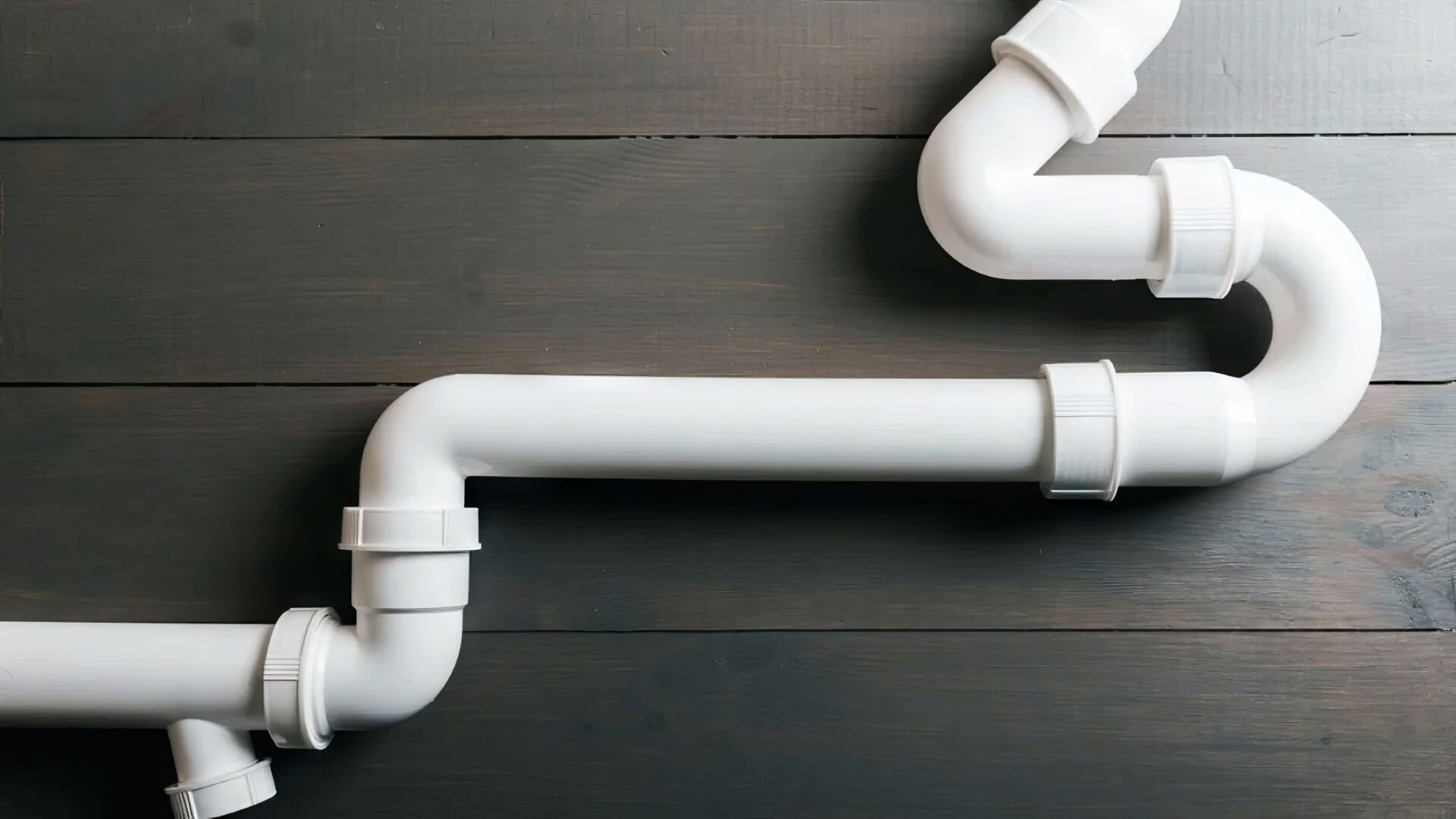Introduction: Can a plunger effectively unblock a drain?
To clear minor blockages, start by gently poking through the clog with a wire hanger. Following this, employ a plunger for optimum suction and to displace common clog culprits such as hair and soap residue.
There are a few key things to keep in mind when using a plunger on a blocked drain:
- Ensure a tight seal over the sink’s overflow holes with a damp cloth to optimise the plunging action.
- Fill the sink to one-third capacity with water to bolster the plunging force needed to remove the clog.
- Wearing rubber gloves, use quick, forceful plunges directly over the drain with the plunger until the clog loosens.
Utilise a sink plunger for routine clogs in household drains or for obstructions in kitchen sinks.
For challenging blockages further in the drains, such as those caused by tree roots, it’s advisable to use a power auger, enlist specialised tools like a plumber’s snake, or seek assistance from a professional plumber.
Getting the right tools: What plungers work best?
Having the right tools on hand is crucial to forming an effective seal and generating the necessary suction when unblocking a drain. Here are some of the most common types of plungers and their key uses:
Cup Plunger
The standard cup plunger, with rubber suction cup on a wooden handle, can also work efficiently for most simple sink or bath clogs that occur along the drain. For the plunger’s cup to be effective when you need to unclog your sink, use it in conjunction with your plumbing system by creating a seal over the drain and directing the force down the plughole.
Flange/Toilet Plunger
A toilet plunger, suitable for homeowners, forms an exceptional seal for drains to efficiently handle clogs due to its unique design. Its design allows it to firmly adhere and plug your toilet drain, positioning it as the go-to choice for addressing toilet clogs.
Accordion Plunger
The accordion plunger’s unique, snug-fitting design allows it to adapt to various pipe scenarios, unlike standard cup plungers.
Its ribbed structure is engineered to direct pressure straight down the drain.
To manage extensive tree root invasions or grease and buildup hair blockages further down the pipe, all you may need to do could involve a robust plunger or the intervention of a plumber’s snake, either manual or powered. Otherwise, getting in touch with a professional Lalor Park plumbing technician really can be your best bet to safely clear out the drain and restore free-flowing water.
How to create a tight seal on the drain
Mastering the creation of an air-tight seal with a plunger is essential in tackling drain blockages, as our guide explains. Here are some tips:
- Use a wet rag or stopper to seal the overflow hole, preventing water leakage and guaranteeing an airtight seal.
- Fill the sink enough to submerge the plunger cup, providing sufficient water for effective plunging.
- Ensure the plunger cup is fully immersed before starting to plunge so that the water can help prevent any air from diminishing the suction power. This allows it to compress and form a tight vacuum seal.
- Smear petroleum jelly on the plunger’s rim for a tighter fit and to minimise air leaks.
- In double sinks, use a cleanout plug on one side to focus plunging pressure on the clogged drain.
- Plunge forcefully with quick, vertical motions to address standing water while maintaining the seal over the drain hole.
- Periodically check to see if the water drainage rate improves. If necessary, add more water and ensure the plunger is resealed before resuming.
Begin with a comprehensive air-tight seal by securely blocking overflow holes; this should facilitate the dismantling of the clog once you exert sufficient downward force with the plunger.
Plunging techniques for maximum suction
Optimising plunging force to combat drain clogs necessitates proper technique and a concerted effort:
- Hold the plunger with both hands and extend your arms to direct the plunging force effectively.
- Position your body directly over the plunger to utilise body weight when plunging straight down.
- Start with 5-10 brisk half plunges to anchor the cup, ensuring your stance is stable.
- Then, perform full-length plunges with swift, vertical motions to exert maximum force in case your drain is still blocked, pushing downward through the plumbing.
- On the upstroke, break the seal and pull the plunger back out to refill fully with water before the next plunge.
- Keep a steady pace, aiming for about 60 full plunges per minute to optimise efficiency.
- Occasionally stop to check off drain progress. Reseal plunger and top up sink water level before continuing with your efforts.
An assertive yet controlled rhythm during plunging is essential to clear your sink effectively; consistent downward pressure can displace even the most persistent clogs.
Using a plunger for minor vs. major blockages
Understanding how to clear sink drain clogs effectively with a standard plunger can often dissolve minor obstructions caused by an accumulation of hair, soap scum, washing powder residue, food debris, and other small blockages.
For efficiently handling partial drain blockages, the plunger is often the optimal choice. With an air-tight seal and proper plunging technique, the suction force can dislodge obstructions along the first few feet of the drain pipe.
Yet, for complete clogs or major obstructions deep in the pipes, you may require a drain auger as a plunger might not suffice on its own. Tree roots, large masses of grease or waste buildup, and collapsed drains require mechanical clearing with a drain snake or hydro jetting.
When it comes to clearing clogs, the following general rule of thumb applies:
- A plunger can typically remedy a partial clog that slows down water drainage
- but for a complete clog where theres no water flow whatsoever from the drain, call Lalor Park Plumbing for professional assistance
Chemical drain cleaners: Baking soda and vinegar
Although some commercial drain cleaners, including those with caustic soda, can help bust through tough clogs, they often contain harsh ingredients that can damage pipes. For an eco-friendly option, you can tackle drain issues with the effervescent mix of vinegar baking soda.
Embrace this simple procedure with the combined force of baking soda vinegar to effortlessly clear your drains:
- Pour 1 cup baking soda into the drain, swiftly followed by 1 cup white vinegar, with the heated blend optimising the vinegar baking reaction. The reaction between vinegar and baking soda creates benign pressure that, after you then pour it into the drain, potentially propels the liquid to dislodge the matter clogging your sink.
- Place the stopper over the drain opening and let sit the mixture for 5-10 minutes; the fizzing action helps in breaking down grease and gunk.
- Remove the plug and run hot water down sink, ensuring it’s very hot (not boiling) water from the tap. This flushes away debris loosened by the chemical reaction.
- For those obstinate clogs, repeating the baking soda and vinegar remedy every few hours, or pouring down some boiling water, might be effective if it’s safe to do so.
Compared to aggressive commercial solutions, this natural approach to clearing drains is easy on the pipes within your home. The key is allowing adequate time for the bubbly reaction and hot water flushing to work their magic dissolving organic matter that inhibits drain flow.
When to use a drain snake instead of a plunger
While a plunger can be a handy first option for clearing simple drain clogs, a drain snake (also called an auger) is often required for more stubborn obstructions deeper in the pipe system.
A key factor to consider is the reach of hand crank drain snakes, which can access drains much farther down; up to 3 metres for hand-crank models and over 45 metres for machine-powered options.
Scenarios where a drain snake becomes necessary include resolving stubborn clogs in shower drains:
- Complete clogs resulting in no water drainage at all from sinks or tubs
- Recurring clogs that keep necessitating the need to unblock shortly after plunging
- Bathtub or laundry drains where a plunger can’t form an adequate seal
- Suspected blockages under sink or beyond the immediate drain trap from tree roots, grease buildup, collapsed pipes etc.
A drain snake often has a long cable capable of reaching through pipes to remove blockages such as hair or grease.
For severe drain problems, particularly down pipe complications, call our team for professional hydro jet cleaning. Our high pressure water jetting, a process akin to—but more powerful than—using a closet auger, clears any clog swiftly and effectively.
Calling a professional plumber for serious blockages
If you have tried plunging, using a drain snake, and natural drain cleaners to no avail, it’s a sign you likely have a serious blockage that requires professional help. Persistent and complete clogs often indicate:
- Extensive buildup of thick grease, soap residue, food waste and other debris
- Large masses of tree roots or other plant matter obstructing pipes
- A fully or partially collapsed drain line
If the aforementioned methods fail to resolve the issue, it’s time to consider an effective alternative strategy. The technologically advanced equipment used by our Lalor Park plumbing technicians can clear out even the toughest clogs quickly and safely.
Hydro Jetting
Discovering how unclog stubborn blockages is easier with state-of-the-art water jetting units that propel water at up to 5000 PSI to scour interiors and cut through years of accumulated gunk. High-velocity water streams can access tight corners, effectively clearing blockage buildups.
Electric Augers
Electric-powered drain augers, with steel cables over 45 metres long, efficiently remove deep-seated obstructions in drains. The rugged, rotating auger bit latches onto roots, grease deposits and solid objects to pull out the debris.
Video Inspections
For a comprehensive pipe inspection, even for issues like drain flies, we use small waterproof cameras to evaluate damage. Our video drain scoping equipment can navigate pipes up to 100 metres down sewer lines and around tight 45 degree bends.
After professional diagnosis, we recommend the best solution, be it hydro jetting, electric cable rodding, or pipe relining for corrosion and leaks.
Instead of spending time at the hardware store on equipment that may be challenging to operate, it’s advisable to contact your plumber for professional assistance. Our licenced Lalor Park plumbers have the technical expertise and cutting-edge gear to tackle severe clogs. Call us on 1300 349 338 for emergency drain repairs.






